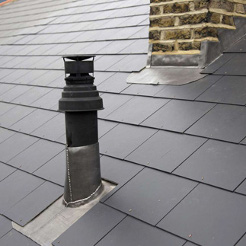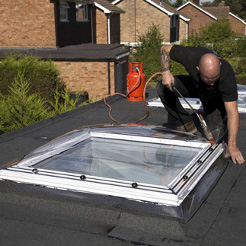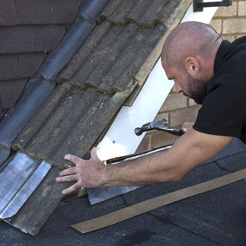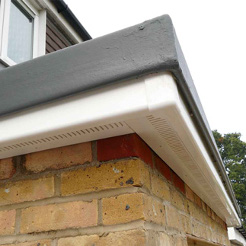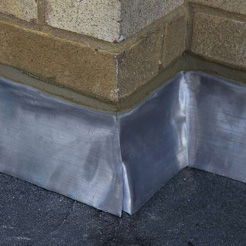The roof over your home plays a vital role in keeping you safe, warm and dry, so it is only right to ensure that you look after it in return. There’s an array of simple yet effective ways in which you can maintain your roofing and whilst you’re there, it would make sense to do the same with your guttering too. Not surprisingly, this is an element which is often forgotten in roofing maintenance. Without the correct level of observation and care, you could find your home experiencing issues which are primarily preventable. Allow us to walk you through a few steps which you should carry out this winter.
Let’s start with your roof…
Roof maintenance is essential to ensure that it carries out all the duties expected of it. Here are three simple yet effective steps that you can take to maintain it as best as you can.
Keep a look out for debris from nearby trees
It may sound like a slight exaggeration, but branches, twigs and other debris from overhanging or nearby trees can be enough to cause damage to your roof, requiring a local repair or even full replacement. Overhanging shrubbery or loose branches and twigs can pierce holes or scratch the shingles, resulting in holes or lifted tiles that allow moisture and rain to enter your attic or loft room. By keeping check on the top of your roof, you will be able to remove the stray items yourself, or call for professional assistance, and save yourself from any hefty costs.
Roof maintenance is essential to ensure that it carries out all the duties expected of it.
Keep watch on your roof’s changes
Whilst checking for loose shrubbery on top of your roof, take a few additional moments to observe the quality of the chimney stack and tiles. Completing this simple action regularly will allow you to pick up on any sudden changes, such as mould growth, lifted or sagging tiles. This could allow you time to arrange for a professional assessment and repair work to take place before a full replacement is needed, keeping your costs down.
Contact Roofrescue
Stay off of the roof
When we say to keep an eye on your roof, or remove loose debris from upon it, we encourage you to first attempt with tools and a ladder. Basic health and safety must always be remembered and if you feel unsteady or nervous to climb upon your roof, you should always call for a trained and qualified roofing specialist to handle it for you. Along with the damage you could cause to yourself if not prepared and educated on how best to clean your roof, you could also be causing damage to your roof by cleaning it with abrasive materials or other damaging factors, essentially doing more damage than good.
Moving onto your guttering, allow us to inform you of some of the how’s and why’s to maintaining it for the sake of your home…
Allowing a build up of debris to remain in your guttering can result in a fair few issues, such as:
- Water overflowing and running out of your guttering incorrectly, causing damage to the fascia boards or soffits.
- Overflowing water causing floods on the ground below, possibly attracting insects and pests
- Cracking or splitting of your guttering due to the weight of additional water and debris build-up
- Mould growth beginning due to the still standing water within your guttering
To assess the working function of your gutters, there are some simple and effective steps that you can take.
Observation
Occasionally here in the UK, we get a number of heavy rainfalls and these are quite likely to occur at least once with each change in season. This allows you four observation slots. Once every season, or every 4 months, head outside mid-rainstorm and observe the rainfall on your roof. Can you see any water running off of your roof and onto the ground below? If your guttering is in good health, you should be able to see water running into the gutter, allowing it to be carried down the necessary route and into the drains. If this process doesn’t seem to be working as it should, that will signify to you that there is a blockage or crack within the gutter pipe and that it is in need of a repair or replacement.
Practical testing
Slightly more frequent than the above observation, you will want to carry out a practical testing in depth. This will allow you to check the function of your guttering and compare it with each assessment, resulting in you gaining crucial knowledge early on if any deterioration has occurred and giving you the time to call for a professional fix before the costs become too steep.
Of course – if you do not feel confident upon a ladder, you can call for a roofing specialist to complete this in-depth testing for you.
Using your ladder, get yourself up to your guttering to allow you a clear insight into its current condition. There are five things that you will want to look out for once up there.
- Loose guttering
- Guttering that is pulling away from the roof or facias
- Sagging guttering and separated joining’s
- The appearance of holes of rusting and wearing within and under the guttering
- Cracks or splits within the guttering
If you notice any of these factors have taken place within your guttering, call for a specialist roofer to visit your home and make a professional assessment. They will be able to determine whether you are in need of a local repair or a full replacement. The earlier you catch the faults, the smaller the repair work may be, so it is important to keep regular check on your guttering. We recommend carrying this practical testing out every 2-3 months.
If you feel as though you roof or guttering are in need of a professional assessment, repair or replacement, of if you would like any further information on ways to maintain yours, get in touch with a member of our friendly Roof Rescue team by calling 020 3189 1618 today.

